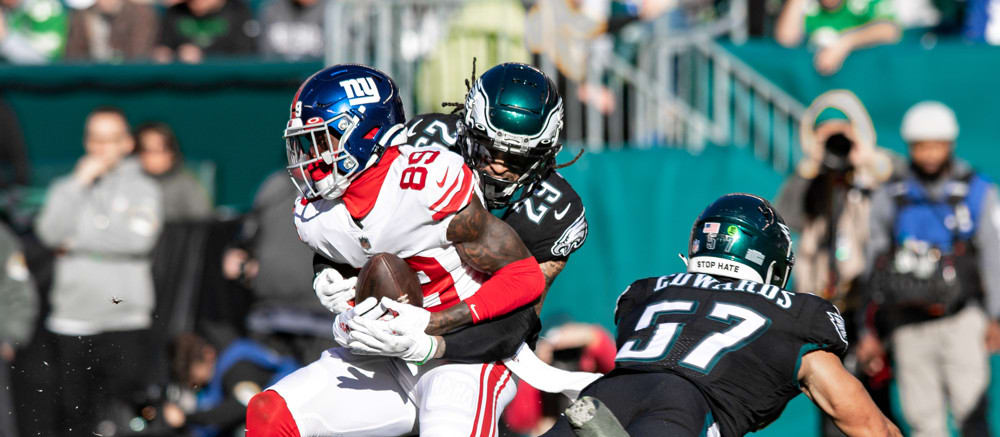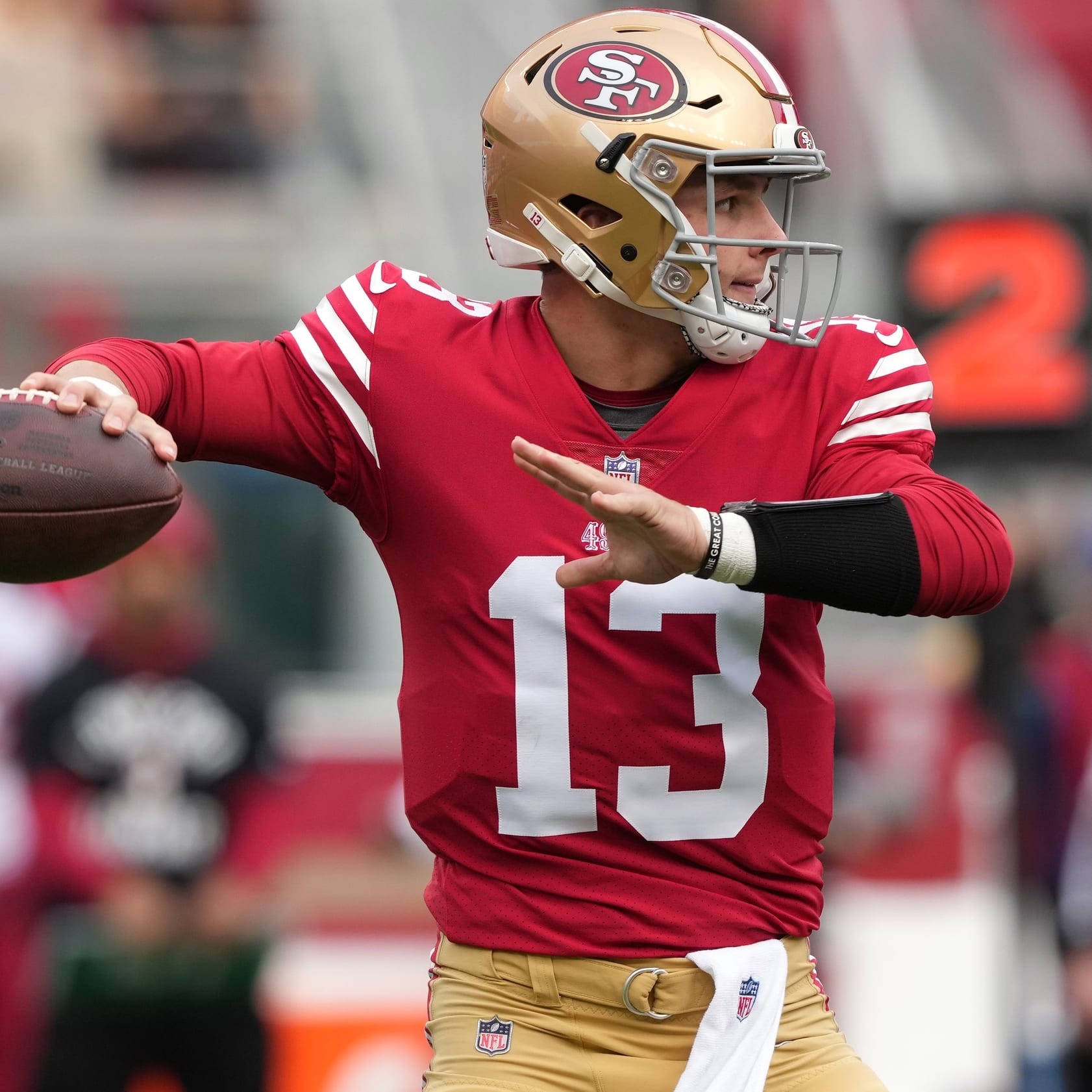The Titans rookie receiver has been plagued by conditioning and injury concerns since being drafted with the 18th overall pick in April's draft. Burks was a limited participant in both rookie and team minicamps due to conditioning problems that were linked to asthma.
Asthma is a common issue in the general public and one that athletes must routinely manage. The condition is classified as a lung disease that presents with a variety of symptoms including chest tightness, shortness of breath and wheezing. Asthma attacks occur when the passageway of air within the lungs becomes narrowed due to inflammation and/or excess mucus. As a result, air is unable to move as smoothly through the respiratory system, making it difficult to breathe. While asthma can be treated with medical inhalers and other breathing treatments, they are not a cure and can leave the individual fatigued. Furthermore, triggers like pollen or cold weather can exacerbate the condition.
Burks appeared to move past the issue in training camp, successfully completing team conditioning tests. However, he is now managing an undisclosed leg injury that limited him in practice and required a wrap following Sunday's preseason action.
The combination of asthma and an early injury should be enough to drop Burks down a round or two in most fantasy formats. While he has the physical frame to be an intriguing prospect, availability remains a very valuable skill that Burks will need to prove he possesses.
Toney did not take part in New
The Titans rookie receiver has been plagued by conditioning and injury concerns since being drafted with the 18th overall pick in April's draft. Burks was a limited participant in both rookie and team minicamps due to conditioning problems that were linked to asthma.
Asthma is a common issue in the general public and one that athletes must routinely manage. The condition is classified as a lung disease that presents with a variety of symptoms including chest tightness, shortness of breath and wheezing. Asthma attacks occur when the passageway of air within the lungs becomes narrowed due to inflammation and/or excess mucus. As a result, air is unable to move as smoothly through the respiratory system, making it difficult to breathe. While asthma can be treated with medical inhalers and other breathing treatments, they are not a cure and can leave the individual fatigued. Furthermore, triggers like pollen or cold weather can exacerbate the condition.
Burks appeared to move past the issue in training camp, successfully completing team conditioning tests. However, he is now managing an undisclosed leg injury that limited him in practice and required a wrap following Sunday's preseason action.
The combination of asthma and an early injury should be enough to drop Burks down a round or two in most fantasy formats. While he has the physical frame to be an intriguing prospect, availability remains a very valuable skill that Burks will need to prove he possesses.
Toney did not take part in New York's second preseason game due to an undisclosed lower leg injury. The injury has been referred to as a knee injury, though others have reported the problem as a hamstring issue. However, it is possible for both these reports to be accurate. The hamstring muscle group is a two-joint muscle, meaning it influences movement at multiple articulations. The hamstring originates at the base of the pelvis, runs down the posterior aspect of the leg and anchors just below the knee to the two lower leg bones. Consequently, the hamstrings are responsible for hip extension AND knee flexion. If the injury involves the distal tendons of the hamstring, the injury may be presented as a knee injury.
Unfortunately, Toney's injury history only complicates the problem. He has a history of hamstring problems and underwent knee surgery in the offseason. As a result, Toney's level of injury risk should be raised while his draft day value should also be appropriately adjusted in the opposite direction. The Giants remain optimistic that the wide receiver will be ready for Week 1, but Toney's second year is starting to look a lot like his injury-riddle rookie campaign.
The Seahawks rookie running back may not be ready to make his NFL debut in Week 1 after undergoing surgery to address a "a little hernia issue."
The term hernia is often very confusing and can make understanding the exact problem difficult. A true hernia occurs when an underlying organ or tissue, like the intestine or stomach, protrude through a weakness or hole in the muscle designed to contain it. These types of hernias most frequently occur in the groin or abdomen.
However, there is also a condition known as a sports hernia. In these cases, repetitive forces placed on and through the midsection are rerouted to the groin and abdomen, causing micro-tears in one or multiple muscles in the area. Sports hernias are often linked to a condition known as athletic pubalgia. In these instances, the cartilage that conjoins the pubic bones is impacted, and weakness in the abdominal wall and inguinal canal can develop. As a result, an actual abdominal hernia can develop, though a true protrusion will not always be present.
To avoid any confusion, medical professionals have adopted the term core muscle injury, eliminating the misleading hernia tag. Fortunately, surgery to address whatever you want to call this injury has a high success rate, and players can return to action in six to eight weeks.
However, Walker's situation remains less clear. Ian Rapoport of the NFL Network reported Walker did not have a sports hernia or a core muscle injury. Instead, it appears the running back likely had a true hernia. While the team is hopeful Walker will not miss time, I would suspect the injury requires a lengthier recovery, and a trip to the short-term injured reserve may be considered. The injury also gives Rashaad Penny the clear edge in claiming the top spot in Seattle's backfield.
Turf Burns
Harrison Butker: Kickers are rarely featured in my columns, but Butker's 72-yard field goal during warmups earned him the spot. The Chiefs kicker missed time earlier in the week with a sore ankle but showed no ill effects of the injury prior to Saturday preseason game. He nailed an attempt from what would have been a record distance and continued to express interest in trying a 70-yarder in an actual game. Butker remains an efficient and effective fantasy option.
CeeDee Lamb: The Cowboys top receiver remains limited due to a laceration on his foot. While specifics on how the cut occurred remain limited, Lamb did reveal the issue required stitches to close. He should be fine once the stitches are removed, especially if he is able to avoid an associated infection. Look for Lamb to return to the practice field this week. Dallas' wide receiving corps can ill afford to lose Lamb with Michael Gallup only recently returning to the practice field following last season's torn anterior cruciate ligament (ACL).
Miles Sanders: Sanders remains out with a hamstring strain, but the team expects him to be ready for Week 1 against the Lions. Hamstring strains remain the "popular" injury of the preseason, and the Eagles running back will remain high risk for re-injury for the immediate future.
Michael Thomas: I really am thinking about just creating a standard template for all the players who sustain a preseason hamstring strain.
[Player X] is nursing a hamstring injury and is considered day-to-day. Hamstring strains are particularly problematic for running backs and receivers, and easily can be aggravated. Those who suffer hamstring injuries are at an increased risk of a secondary injury, especially if they return within two weeks of the initial strain. Proceed with caution.
Toney, Sanders and Thomas, along with Terrace Marshall, Elijah Mitchell and Laviska Shenault, all fit this model and should be managed accordingly.




































